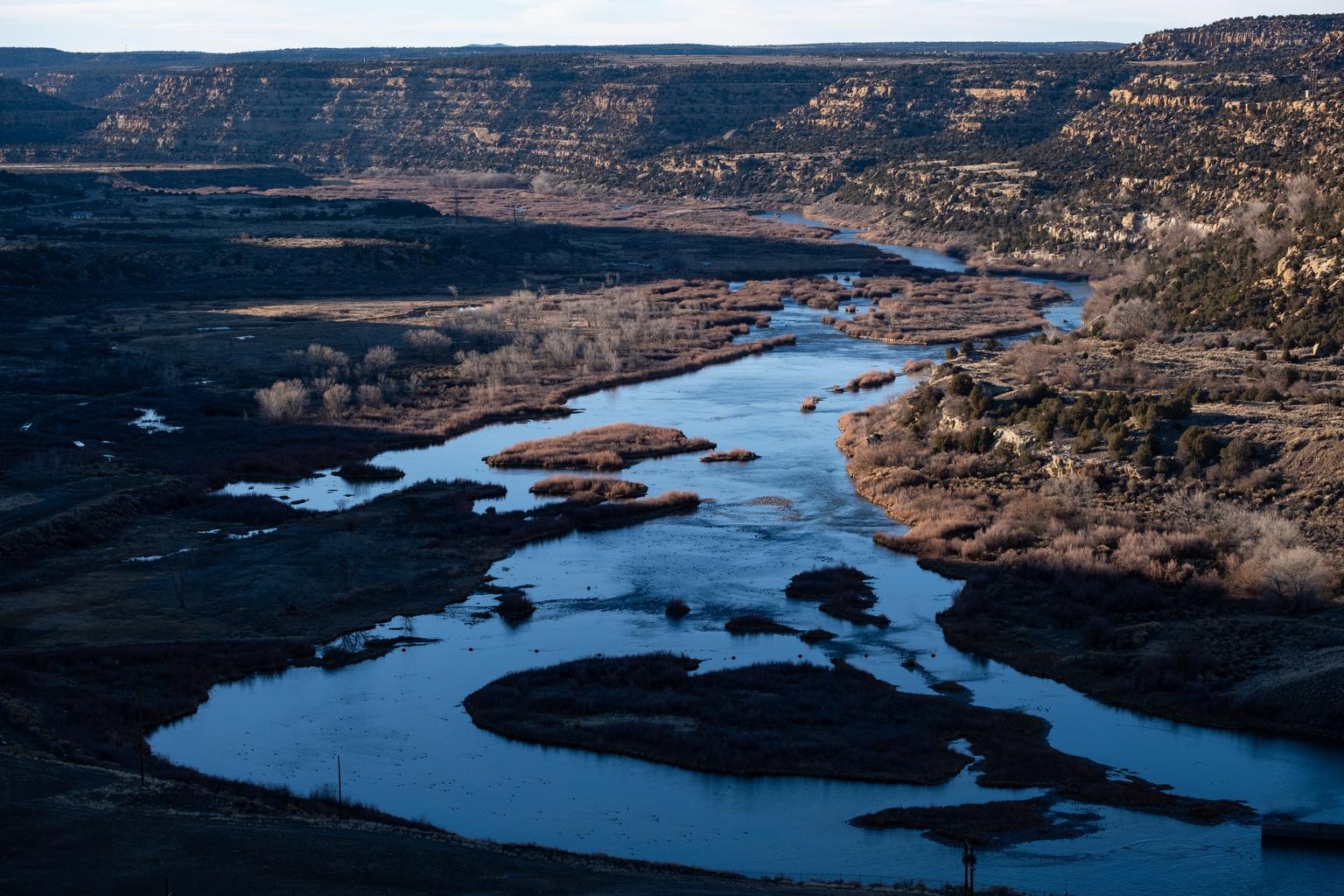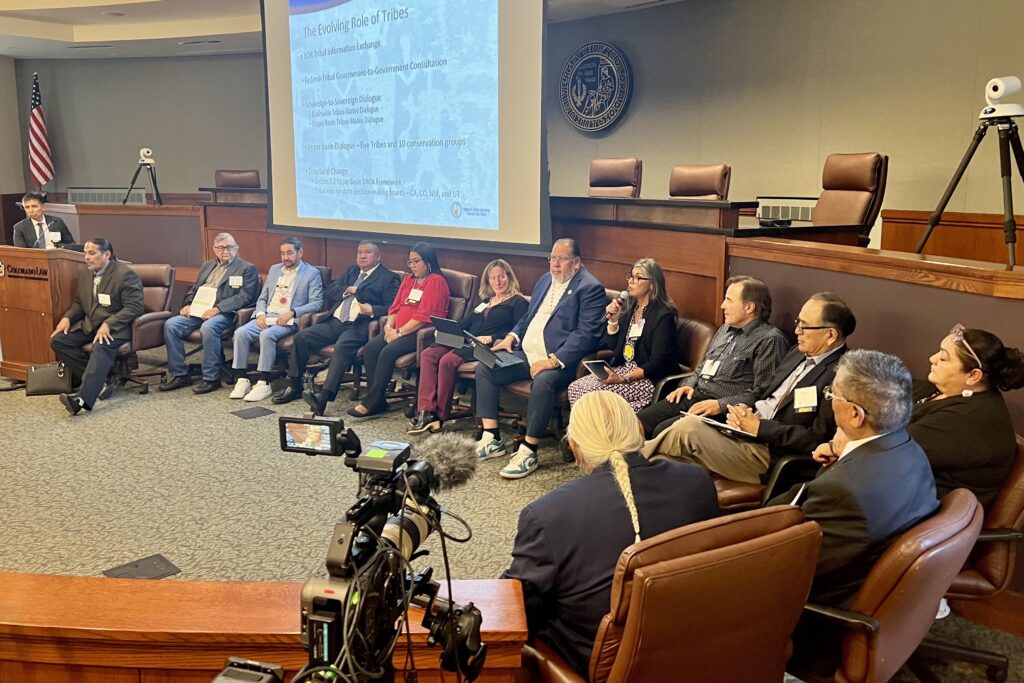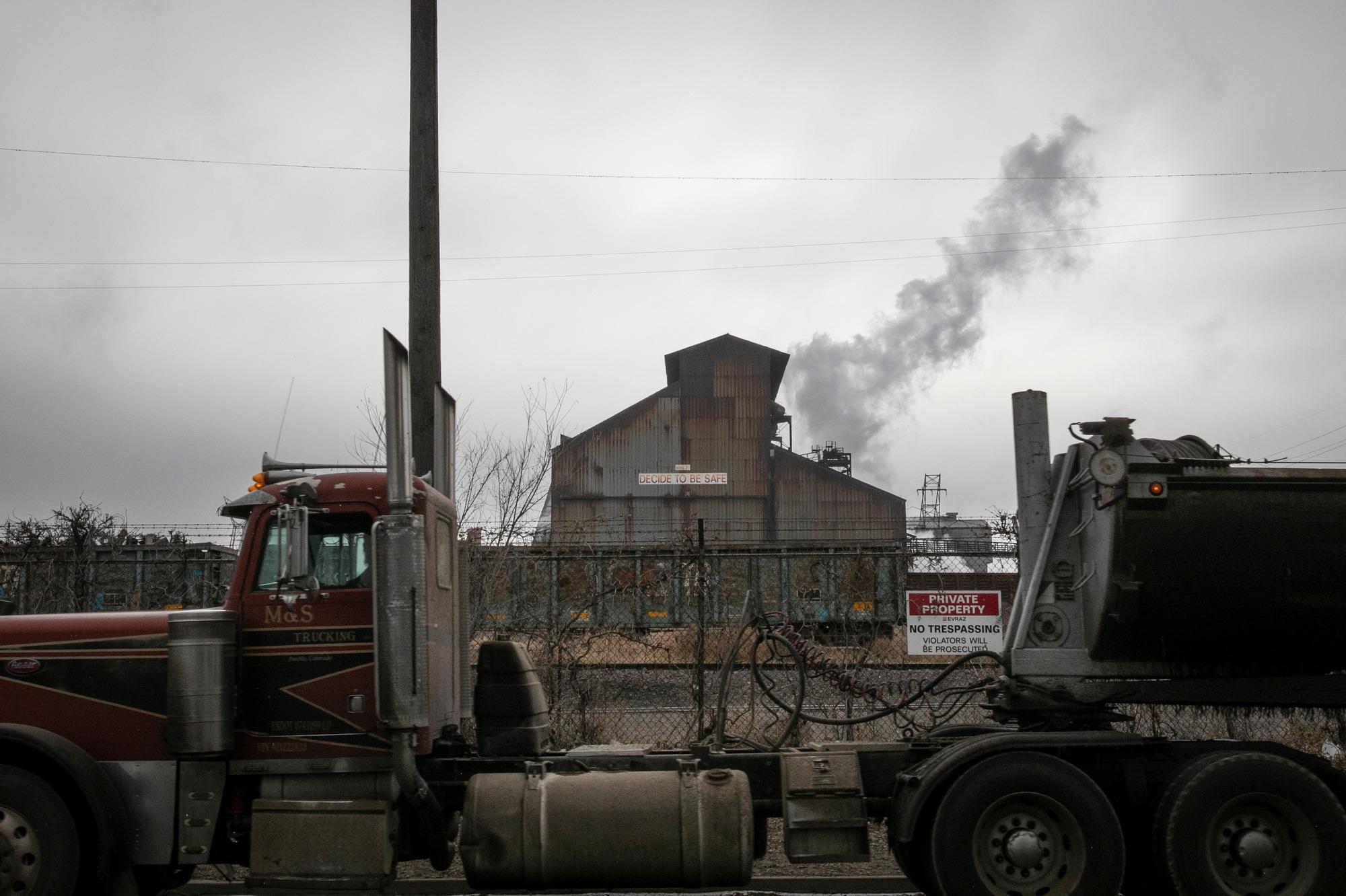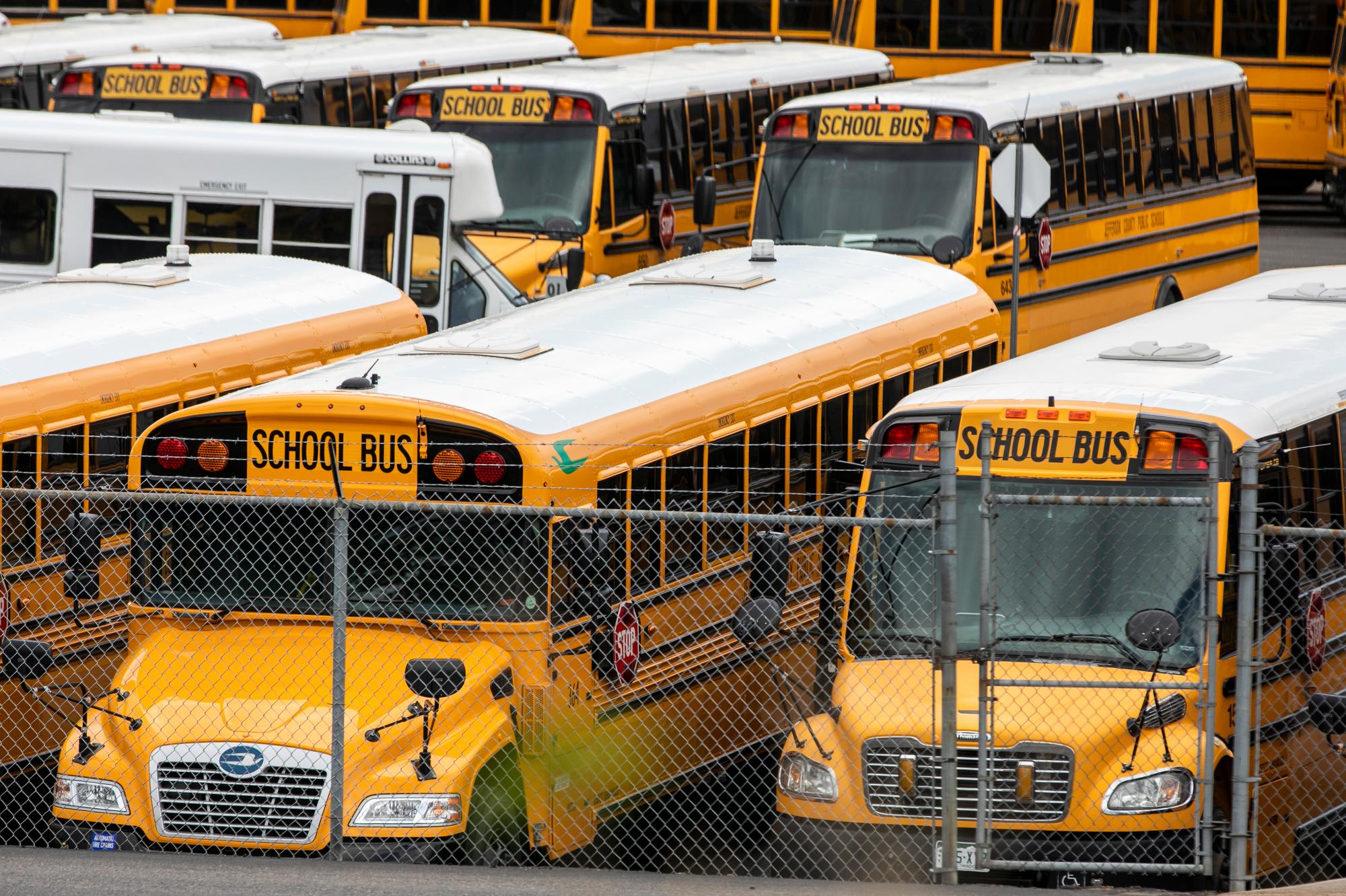
Representatives from more than a dozen Indigenous tribes spoke at a CU Boulder law conference last week about their interests in the Colorado River from each of their perspectives.
Many of the prominent state and federal officials who manage the water attended the conference. But as they and other water authorities prepare to negotiate the river’s future, it’s unclear how tribes will participate, to what degree tribes will be treated as equal sovereigns, and how their desire to use all the water they legally have rights to will be considered.
It’s also unclear whether negotiators will aim for a way to make the long-term reductions in water usage that a decades-long megadrought has made necessary or whether they will propose more short-term changes.
The gathering happened at a critical time: Collectively, Colorado River users have to figure out how to live with significantly less water going forward, and the federal government is forcing states to come to an agreement.
Right now, federal officials are considering a short-term proposal from California, Arizona and Nevada to maintain enough water in Lake Mead and Lake Powell — the nation’s two largest reservoirs — to avoid catastrophe along the Colorado River over the next three years. This week, the federal government plans to formally start the process for negotiations on what happens after 2026. What’s decided in those negotiations will likely govern how much water everyone gets to use for years to come.
The group of tribal representatives and state water officials, along with academics who study the river, used the two-day conference for discussions about how to make their collective use of the river more sustainable over the long term. Through dams, reservoirs, canals and pipelines, the Colorado River supplies tens of millions of people with water to live and 5 million acres of farm and ranch land that feeds the whole country.
The tribes have a shared history of using the river and its tributaries over thousands of years and migrating based on water availability. In the century since the river has been dammed and diverted across seven states, each tribe has a different story about how their water rights have been denied and what they seek to change in the river’s management going forward.
Some river scholars and even people with roles in the negotiations are unclear about what’s possible as they determine longer-term allocations of the water.
“How much of it will [address] the equity problems that are facing the river? I'm waiting to see how that evolves, quite frankly,” said Eric Kuhn, an author and former head of the Colorado River District in western Colorado.
U.S. Bureau of Reclamation Commissioner Camille Touton said in Boulder, “In spite of our efforts, the path forward remains a challenging one. We all know that. The next step will be the hardest in the history of our organization.”
It’s still not clear how tribes will participate in the negotiations.
Touton and others in the Biden administration, as well as some state officials, have stepped up efforts to include tribes in Colorado River discussions. Touton promised “there will be a specific framework” to do so in the decision-making process that formally starts this week. Tribes collectively hold rights to about a quarter of the water in the Colorado River.
But the federal commissioner wouldn’t describe how the process could unfold differently than past Colorado River decision-making. Asked about one suggestion — to set up a formal commission with states and tribes to develop a longer-term plan for the river — Touton paused, then declined to answer the question directly.
A lot is at stake for tribes, and each circumstance is unique.
For example, Hopi Tribe council member Dale Sinquah said his people still need to have their water rights settled.
Southern Ute Tribal Council Vice Chair Lorelei Cloud said the tribe wants to use water they have legal rights to in southwestern Colorado, but they don’t have the infrastructure. She said about 1,000 tribal members still have to manually haul water to their homes, and the tribe hasn’t been able to develop farmland.

Crystal Tulley-Cordova from the Navajo Nation said her tribe couldn’t rely on groundwater because of abandoned uranium mines on their land.
Dwight Lomayesva, vice chairman of the Colorado River Indian Tribes on the border of California and Arizona, said his people would like to upgrade their farming and water infrastructure to make it more efficient, but the federal government still owns it. “The last major change in our irrigation infrastructure was made in 1942, when the United States government built some canals for the Japanese who were interned on our reservation,” he said.
Each needs to negotiate for themselves individually.
“To think that there's an ‘Indian solution,’ really dishonors that individuality and the uniqueness of each one of those tribes,” said Daryl Vigil, a Jicarilla Apache water leader who used to direct a tribal partnership in the Colorado River basin.
Tribes have only been getting legal access to their water in recent years and decades. That puts them in a peculiar position: Just as states are talking about cutting back their usage because they have collectively been using more than the river provides in the age of climate change, tribes are trying to make use of their full legal allocations of water for the first time.
They have long been stifled from doing so because it’s taken decades to litigate how much each tribe can use; and because they have not been able to build the infrastructure to physically move all the water and put it to use.
The downriver states’ short-term agreement to use less water could make room for more substantial changes, but it’s far from guaranteed.
Negotiators from Arizona, Nevada and California are adamant the deal they worked out this spring to preserve adequate water in the river for the next few years will work. “We’ve managed the risk,” said Colby Pellegrino of the Southern Nevada Water Authority. They said that clears the way to think beyond the immediate crisis and consider bigger things like equity in the process that formally starts this week.
But the states have spent the past year tinkering with the existing rules about how much water each entity gets to use, and they were able to come up with an agreement only because 2023 has proved to be such a wet year, which bolstered water reserves in the basin. So the idea of substantially rewriting the rules — to account for much less water over the long term and much more tribal input — before they’d need to take effect in 2026 is a tall task.
Touton, the Bureau of Reclamation commissioner, predicts they will take it on without the benefit of more wet years.
“While the projected runoff this year continues to look promising, it's estimated that it's equal to more than the last three years combined. There are no guarantees that this is more than a one-off,” Touton said.









